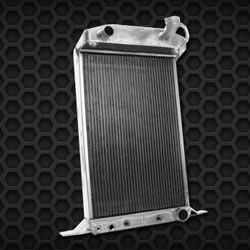A fuller look marked the 1935 Model 48 Fords, with smaller windows and a more prominently Vee'd grille than 1933-34. Also new was an integral trunk for sedans.
It added a bulky "bustle," but erased the increasingly old-fashioned external trunk rack and spare tire. A new camshaft and better crankcase ventilation further enhanced the lively V-8, and the frame and rear axle were beefed up.
Retained from Model T times was an exceedingly simple suspension: just a solid axle on a transverse leaf spring front and rear, an archaic setup that wouldn't be abandoned for another 13 years. This and the use of mechanical brakes through 1939 left Ford distinctly behind the times, but old Henry believed simpler was better, and he was nothing if not stubborn. Still, he did give in to steel wheels, which replaced traditional wires after 1935.
Ford made only minor styling changes for 1936, but they were good ones. The most obvious were a longer, more-pointed hood and a more sharply Vee'd grille to match. Industry design trends dictated hiding some previously exposed components, so horns now hooted from behind little covered holes astride the grille. Model choices were still numerous, but Standard and DeLuxe were now distinct series, with the latter listing twice as many body styles (seven to 14).
